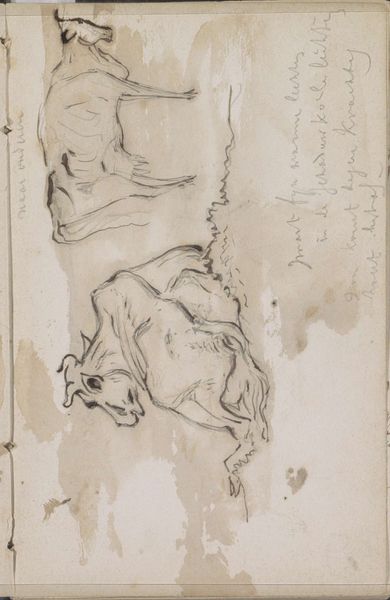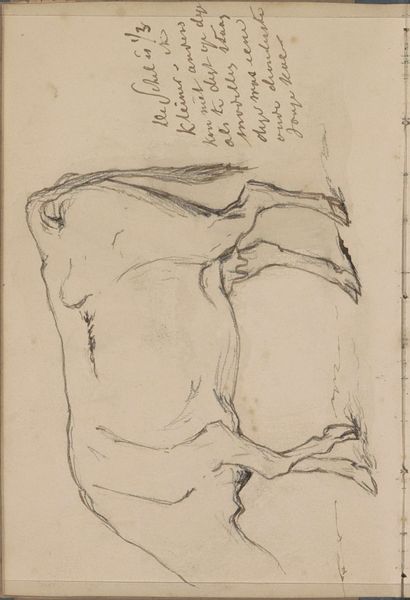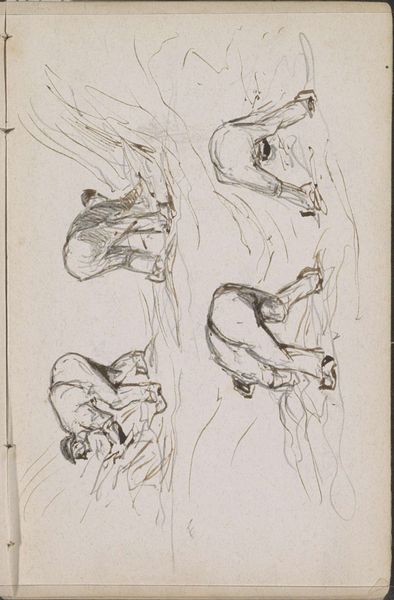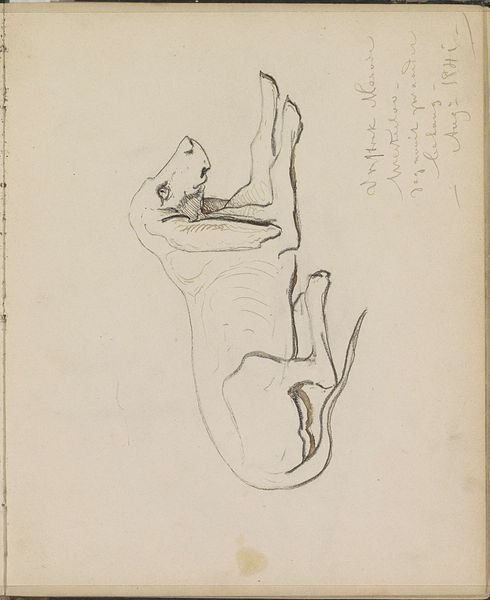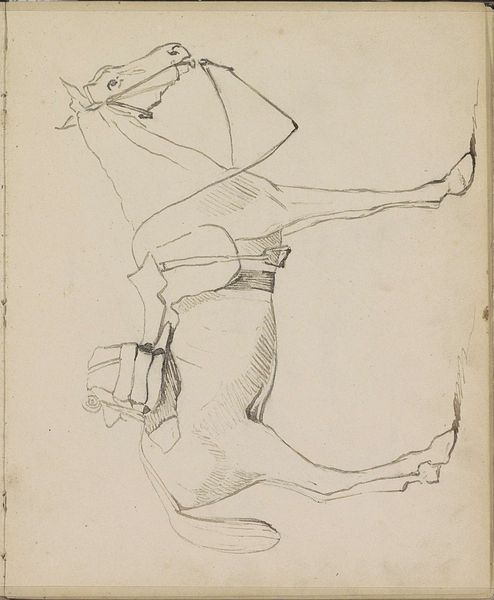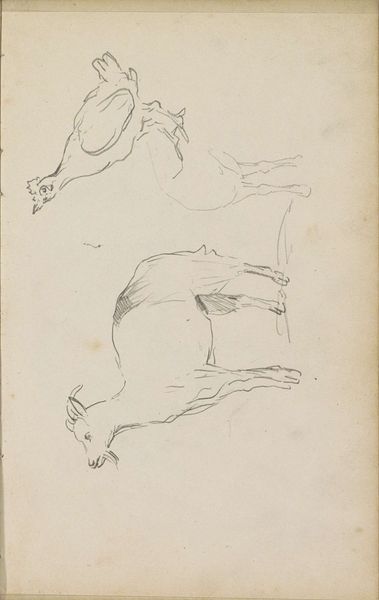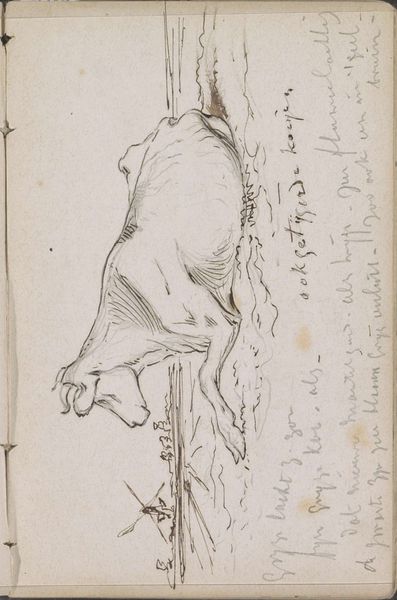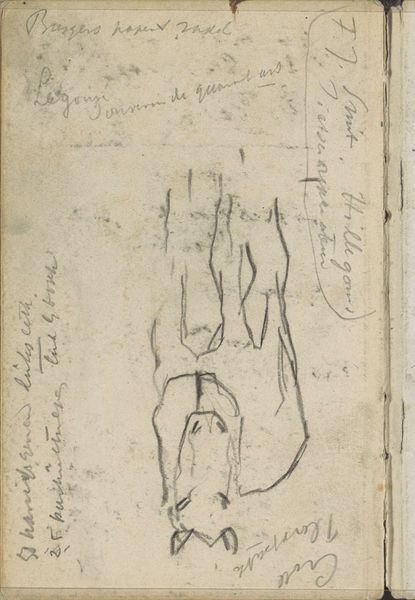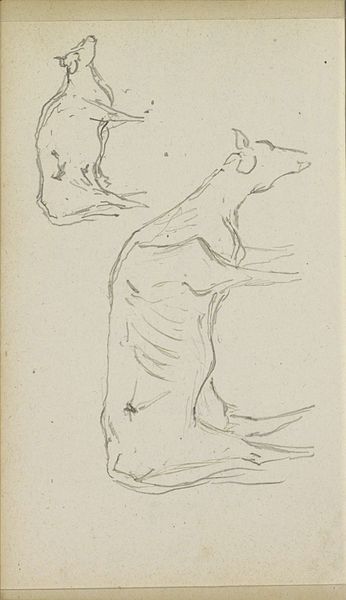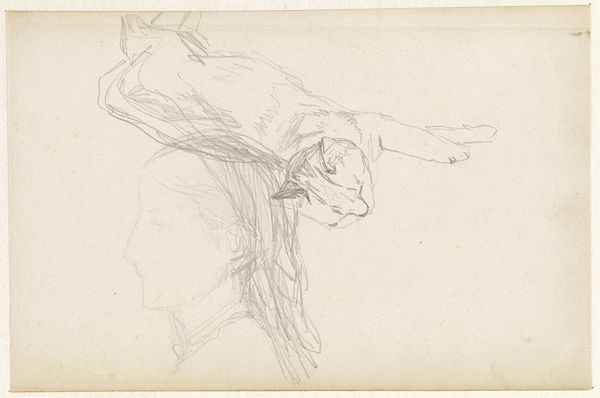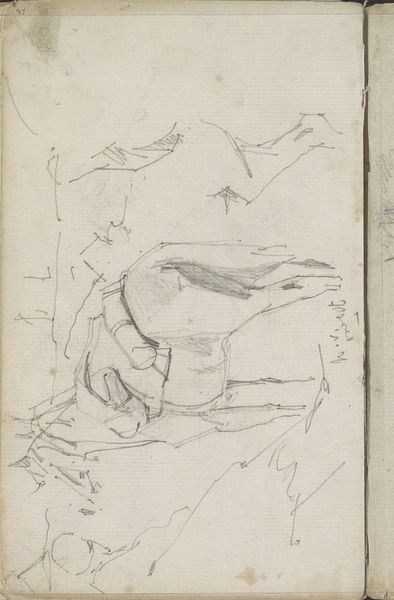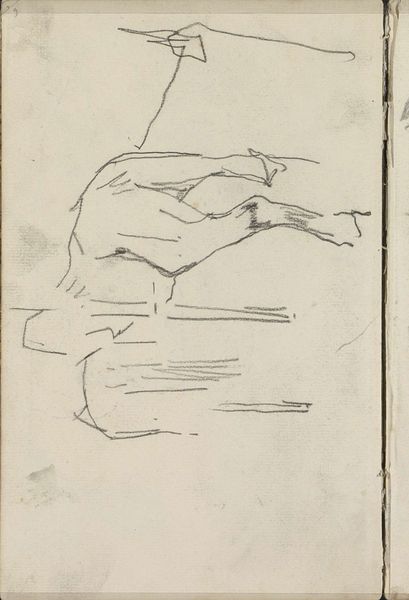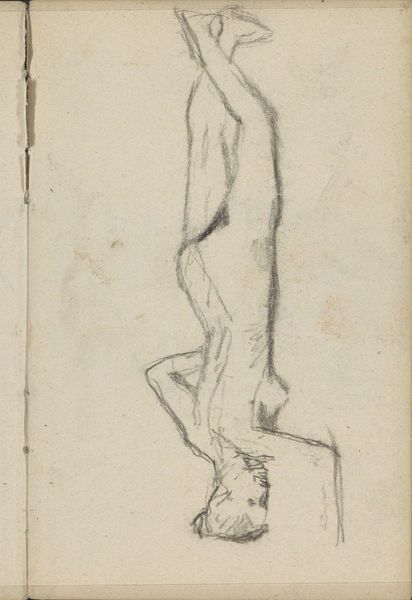
drawing, paper, pencil
#
drawing
#
animal
#
landscape
#
figuration
#
paper
#
pencil
#
horse
Copyright: Rijks Museum: Open Domain
Editor: Here we have Johannes Tavenraat's "Grazend mager paard," made between 1862 and 1864. It's a pencil drawing on paper. The horse appears so frail; you can see its ribs. It feels like a quick study. What stands out to you about this piece? Curator: It's intriguing how Tavenraat uses such basic materials, just pencil and paper, to depict this "meager" horse. Think about the social context. In the mid-19th century, horses were still vital for labor, for agriculture. A malnourished horse speaks volumes about the economic hardships and the working conditions of the time, doesn't it? Consider the labor extracted from this animal, the cycle of consumption, even its eventual end. Editor: That makes sense. It’s not just a depiction of an animal, but also reflects the society that relies on it. I was focused on the line work but hadn't considered the horse's implied labor. Curator: Exactly! The lines themselves become a testament to this labor. The quick, almost frantic marks, contrasting with the quiet desperation of the horse's pose, how do you interpret that material interaction between the pencil, paper, and the artist’s hand, considering the subject? Editor: Maybe it mirrors the relentless pace of work, a sort of forced depiction echoing forced labor. The rapid marks don’t romanticize; they’re more like documenting reality, emphasizing its rawness. Curator: Precisely! And this challenges that separation we often impose, the gap between fine art drawing and the sheer work, the toiling. The very act of drawing becomes a form of engagement with that material reality. It also raises questions, who is he making it for? A preparatory sketch perhaps? Editor: I hadn’t thought about the labor that goes into art-making, both literally, in creating the piece, and how that making can reflect other labor systems. That really opens it up! Curator: Indeed. It shows how looking at materials and production can reveal so much more about a work and its world.
Comments
No comments
Be the first to comment and join the conversation on the ultimate creative platform.
